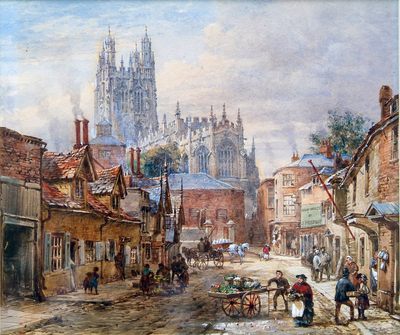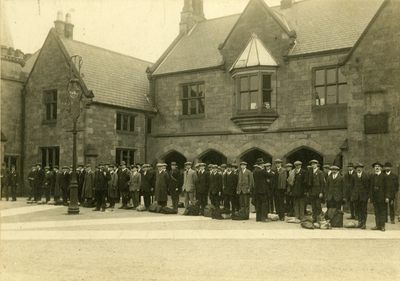Wrexham, its beginning
There’s been settlement round here since at least the Bronze Age, and the Romans built a brickworks at nearby Holt. Wrexham began to develop as a trading town after the Princes of Powys conquered the area in the early 12th century, creating the stability that Wrexham needed to flourish as well as trading further afield.
17th and 18th century
Wrexham, now a regional market town, was central to the economy of North Wales, attracting travelling merchants from as far as Birmingham and Manchester. Purpose built market courts were built in the late 18th century, such as Manchester Square (where the General Market is now). The Beast Market on Eagles Meadow attracted farmers and drovers from throughout the borders. The wool and leather industries were booming.
19th century
Industry arrived, and the town kept growing. 1840 saw the arrival of the Shrewsbury and Chester Railway, and further rail routes opened up to the north in 1866 and south in 1895. New shops and businesses opened to cater for those now in steady employment in local industry – iron and steel making, coal and lead mining, quarries and brickworks, and of course the breweries!
20th century
In 1934 Wrexham was rocked by the tragic Gresford Colliery disaster, which killed 261 miners and three rescuers. Mining, steelmaking and brewing went into decline, but other industries took their place, and the main Industrial Estate became the biggest in Western Europe.
21st century
The town is now home to Glyndwr University. New shopping developments like Eagles Meadow have changed the town’s layout, but it’s still a lively place, with lots going on.
More Intriguing Facts
Read about the worlds’ first commercial helicopter flight, tunnels in Wrexham, and Elihu Yale. Just click here.


